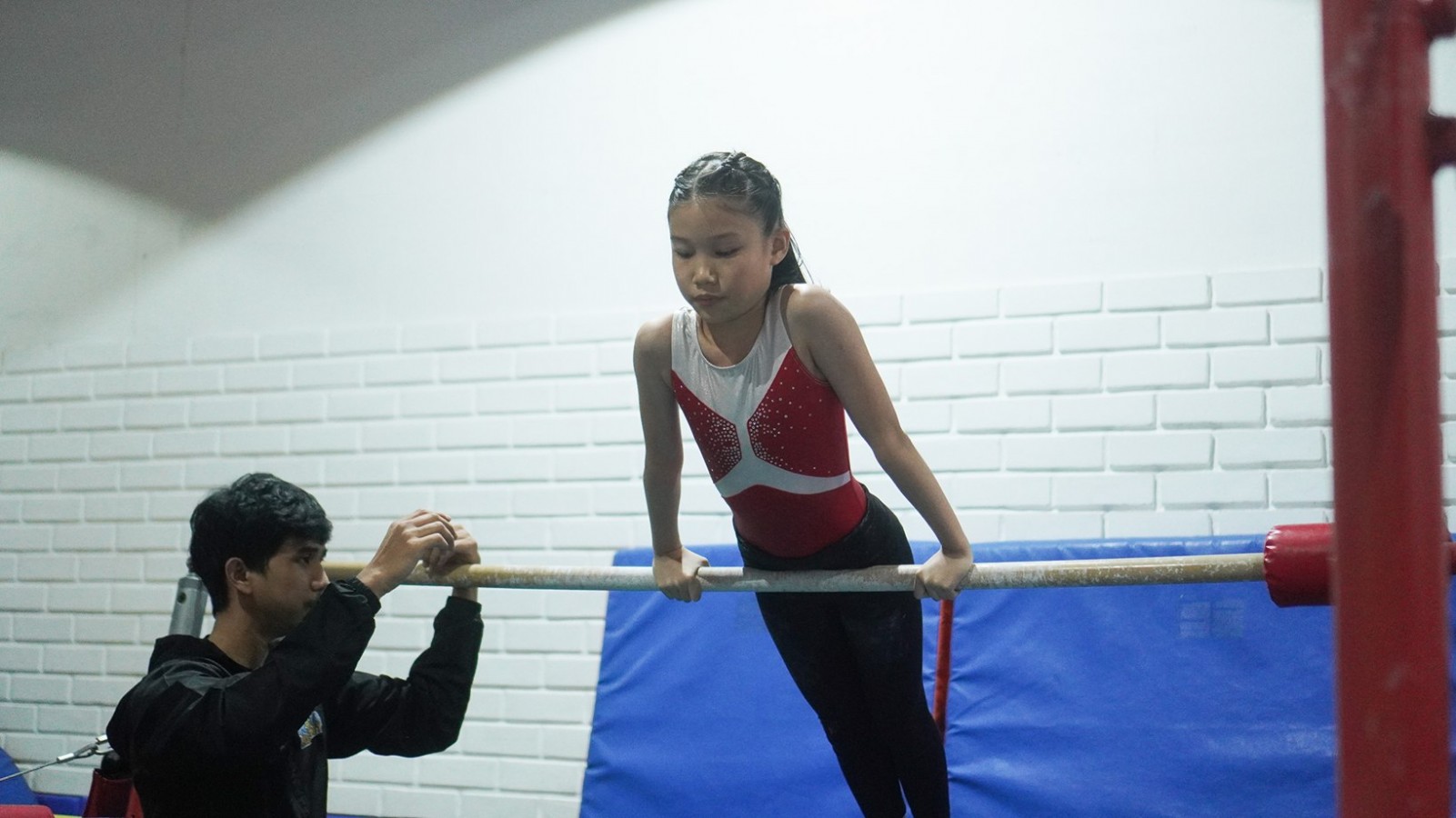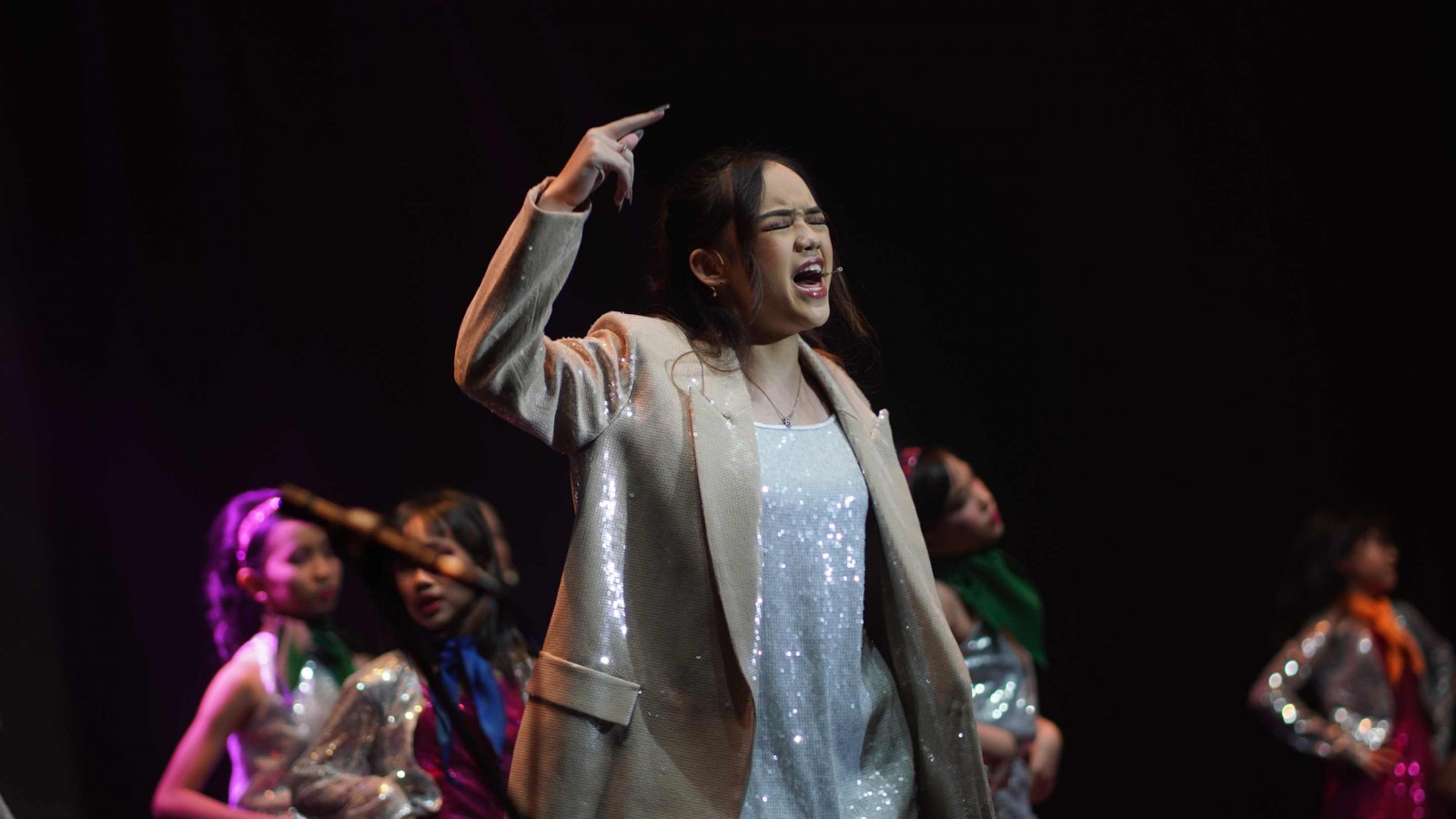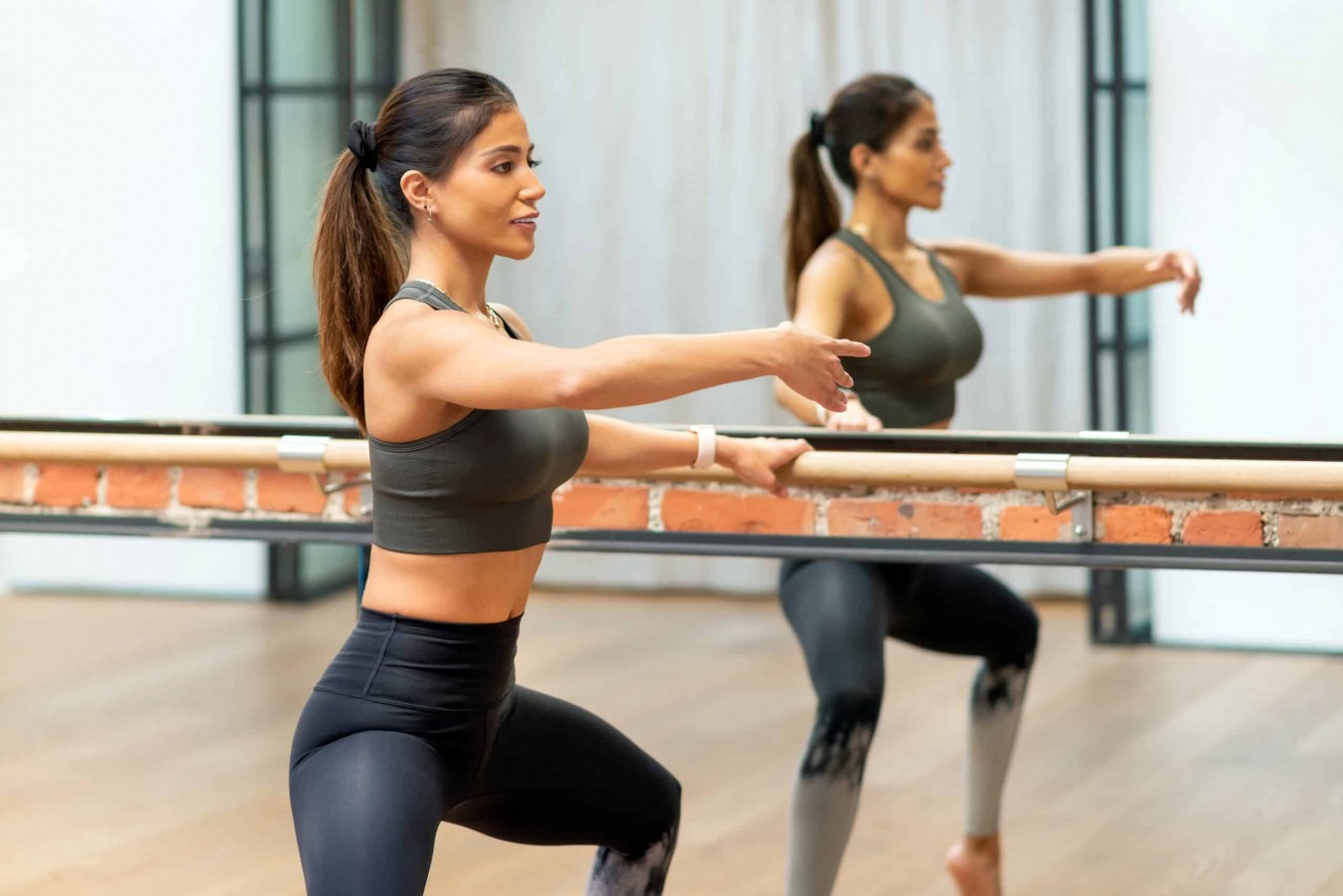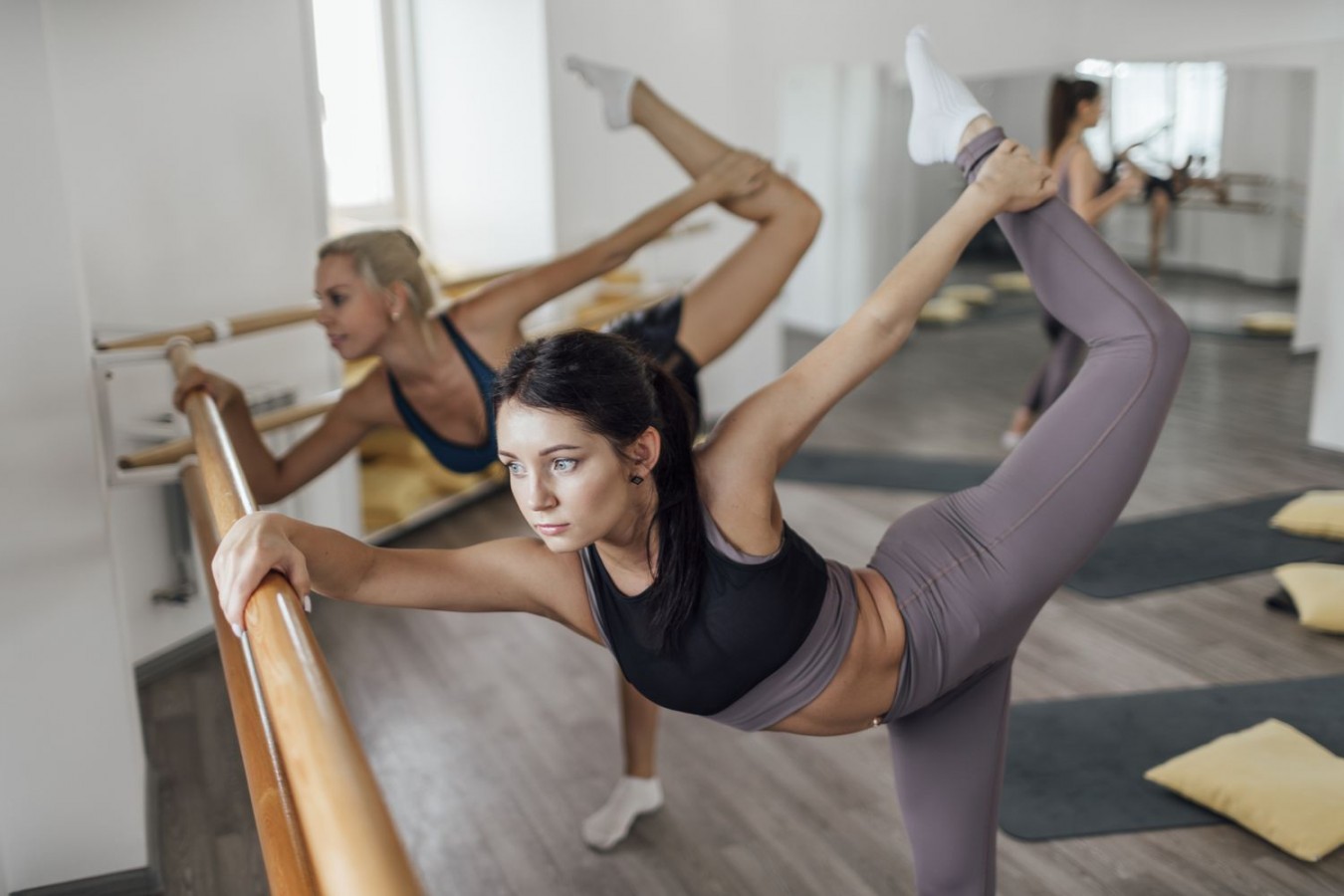Gymnastics Kip: Techniques and Training Guide

The kip is a basic skill in gymnastics that requires strength, coordination, and precise technique. Mastering the gymnastics kip is essential for progressing to more advanced bar routines and is often one of the first skills gymnasts learn on bars.
Whether you're a beginner learning the basics or an advanced gymnast perfecting your technique, understanding the intricacies of the kip can elevate your performance to new heights. This guide explores the essential techniques, training methods, and tips to help gymnasts of all levels achieve mastery in the art of the kip.
What is Kip in Gymnastics?
In gymnastics, a kip is a fundamental skill performed on the uneven bars. It involves a dynamic movement where the gymnast swings from a hanging position beneath the bars to a position above the bars using a combination of momentum, strength, and technique.
The kip is crucial for transitioning between different elements on the bars and is often a foundational skill for more advanced bar routines. It requires coordinated movements of the arms, core, and legs to generate the necessary momentum and lift the body over the bar smoothly.
Mastering the kip is essential for gymnasts aiming to excel in bar routines and competitions.
How to Do a Kip
To execute a perfect kip, gymnasts must coordinate their grip, body positioning, and timing to generate enough momentum to smoothly lift their body over the bar. Here’s a detailed guide on how to perform a kip effectively:
A. Glide
The kip begins with the gymnast hanging straight from the uneven bars, arms extended and gripping the bar with an overhand grip slightly wider than shoulder-width apart.
The first phase, known as the glide or swing, involves initiating a controlled pendulum motion with the legs. This swinging motion generates momentum, which is crucial for transitioning from a hanging position below the bar to a position where the hips can rise above it.
B. Pike-Up
As the gymnast reaches the peak of the swing, typically at the front of the bar, they begin the pike-up phase. This involves pulling the legs and hips upward towards the bar while simultaneously bending at the hips to bring the legs closer to the chest.
The goal is to create a compact body position that facilitates a smooth transition over the bar. During this phase, core muscles, particularly the abdominals and hip flexors, engage to lift the lower body towards the bar.
C. Pull-Up Your Pants
The final phase of the kip is often colloquially referred to as "pull-up your pants" in gymnastics coaching.
In this phase, after achieving the piked position and as the gymnast's hips approach the bar, there's a crucial moment where they need to drive the heels upward and extend the arms to push away from the bar slightly.
This action creates enough space for the hips and legs to clear the bar and transition smoothly to a position where the gymnast can continue their routine or prepare for the next element.
Muscles Involved in Performing a Kip
Performing a kip in gymnastics engages several key muscle groups, primarily focusing on the arms and shoulders, as well as the core. The arms and shoulders play a critical role throughout the kip sequence.
Initially, during the hanging phase, the gymnast's arms are fully extended to maintain a strong grip on the bar, while the shoulders stabilize the body's position. As the kip progresses into the swing phase, the arms and shoulders dynamically control the movement, guiding the swing's direction and intensity.
Simultaneously, the core muscles are essential for stability and generating power. Throughout the kip, the core, including the abdominals, obliques, and lower back, engage to maintain body control and support the gymnast's movement.
During the pike-up phase, the core muscles contract to lift the legs toward the bar, facilitating the transition from a hanging position to one where the hips can rise above the bar.
This coordinated effort between the arms, shoulders, and core is crucial for executing a smooth and efficient kip, allowing gymnasts to perform advanced maneuvers on the uneven bars with strength and precision.
Kip Strengthening Exercises
To strengthen the muscles necessary for performing a kip in gymnastics, incorporating specific exercises into your training regimen can significantly enhance your skill and technique. Here are some effective kip strengthening exercises:
1. Pull-Ups and Chin-Ups
These exercises primarily target the upper body muscles, including the arms, shoulders, and back.
Pull-ups involve gripping a bar with palms facing away (overhand grip), while chin-ups involve palms facing towards you (underhand grip).
Both exercises help develop the pulling strength necessary for initiating and controlling the kip movement.
2. Push-Ups
Push-ups are beneficial for strengthening the chest, shoulders, and triceps, which provide stability and support during the kip.
Variations like diamond push-ups or elevated push-ups can add challenge and target different muscle groups.
3. Planks
Planks are excellent for core strengthening, targeting the abdominals, obliques, and lower back muscles.
Holding a plank position helps improve overall core stability, crucial for maintaining control and form throughout the kip.
4. V-Ups
V-ups are a dynamic abdominal exercise that enhances core strength and coordination.
By lifting both the upper and lower body simultaneously, V-ups simulate the motion of bringing the legs up during the pike-up phase of the kip.
5. Leg Lifts
Leg lifts are an essential exercise that can significantly aid in learning and mastering the kip in gymnastics. This movement helps build the core strength and hip flexor endurance required for the explosive lift during a kip.
By performing leg lifts, gymnasts can improve their abdominal muscles' ability to control and stabilize their lower body, which is crucial for initiating the kip's upward motion.
Additionally, leg lifts enhance the athlete's body awareness and coordination, both of which are vital for the smooth execution of this complex skill. Incorporating leg lifts into a training regimen can thus accelerate a gymnast's progress in performing the kip with precision and confidence.
Elevate Your Gymnastics Skills!
The kip in gymnastics demands both physical strength and technical finesse. Consistent practice and attention to detail are key to achieving a fluid and efficient kip, paving the way for progression in competitive gymnastics.
Experience the exhilarating world of gymnastics with the unmatched program at Rockstar Academy, renowned for its focus on excellence in gymnastics training. Our program emphasizes skill development on the uneven bars, vault, beam and floor where athletes learn precision and strength crucial for competitive success.
Whether you're aiming to master new routines or prepare for Gymnastics Testing, our Sports & Performing Arts Academy provides expert coaching and a supportive environment. We also offer opportunities for students to participate in events and competitions such as Elite Championships and RockOlympics.
Take the first step towards achieving your gymnastics goals with our exclusive free trial offer, where you can discover the benefits of our program firsthand. Join us at Rockstar Academy and unleash your potential in gymnastics today!
FAQ
What is a kip in gymnastics?
A kip in gymnastics is a dynamic skill performed on uneven bars where the gymnast transitions from a hanging position beneath the bar to a position above it using momentum and strength.
How to learn gymnastics kip?
Learning the gymnastics kip involves practicing controlled swings, engaging core muscles for stability, and timing the hip drive to clear the bar. Consistent training and guidance from coaches help develop the technique and strength needed to master the kip.



